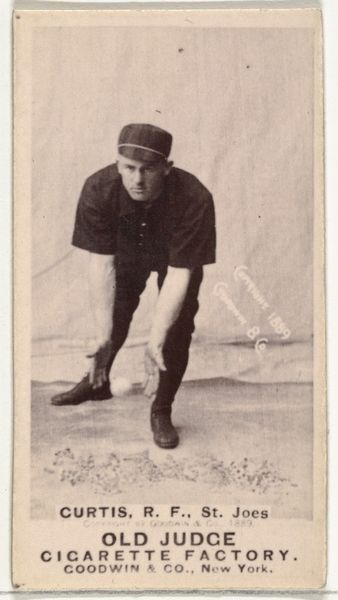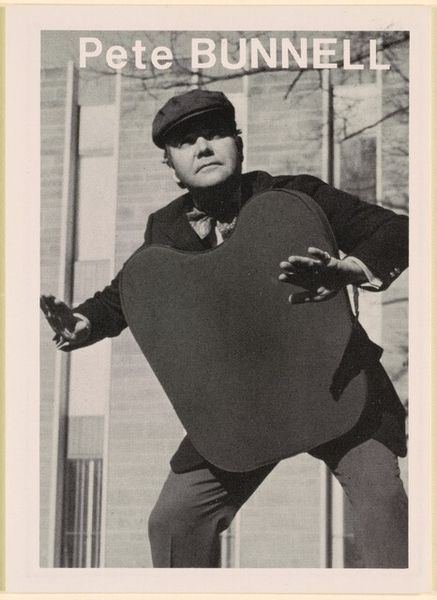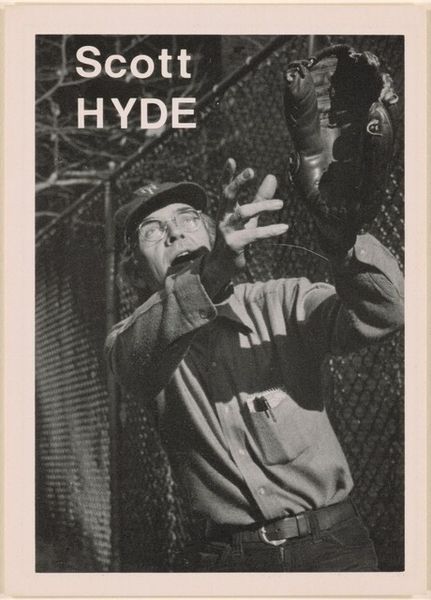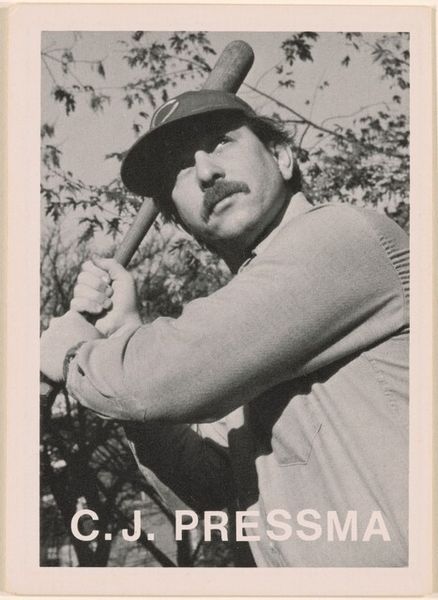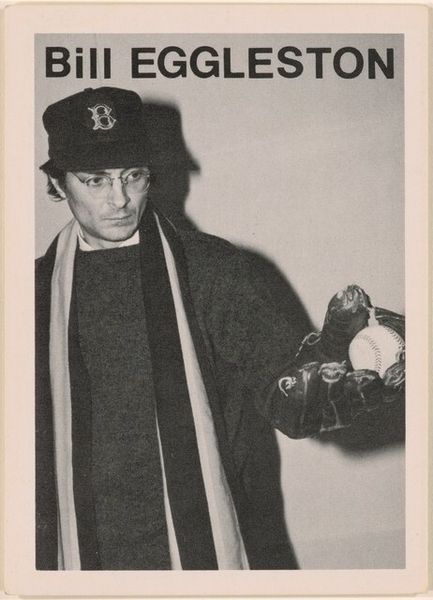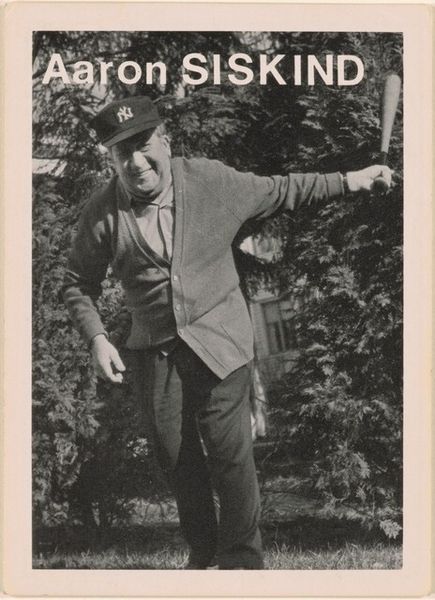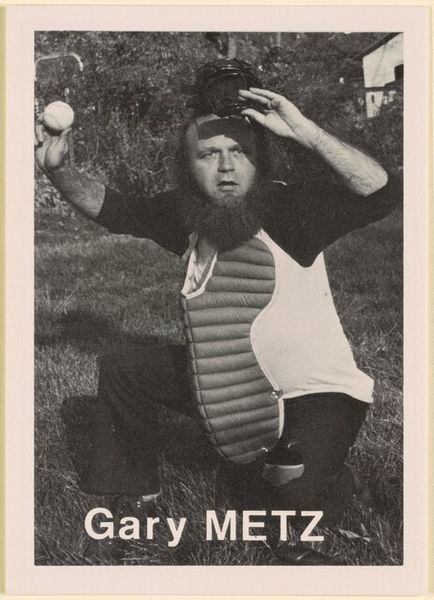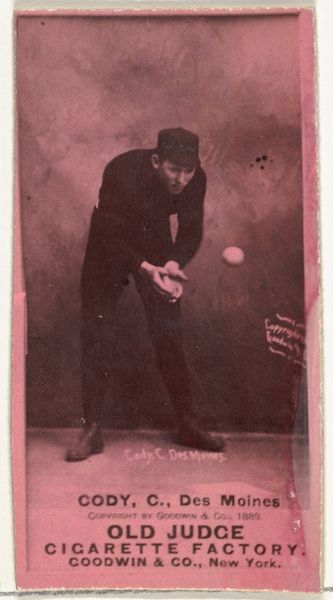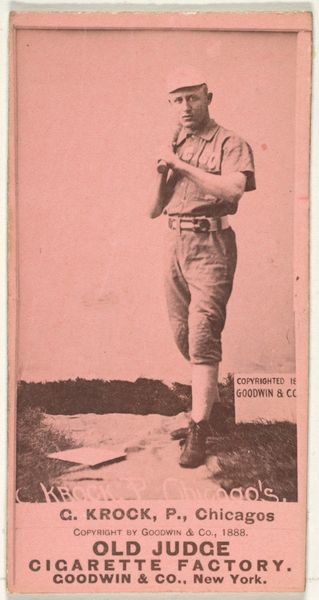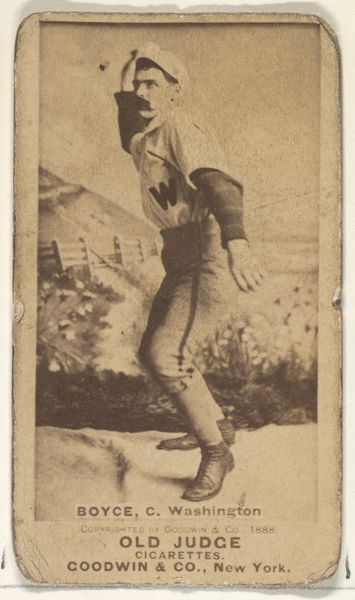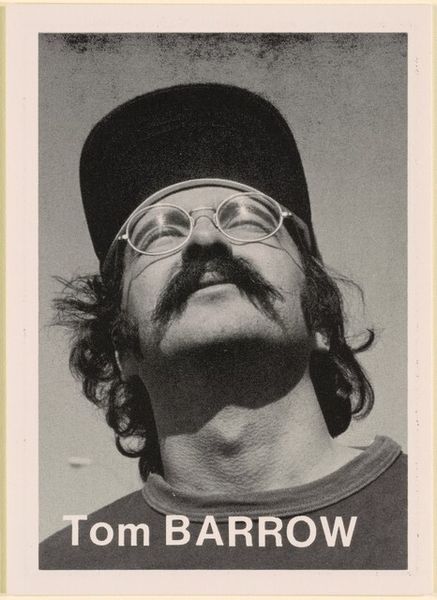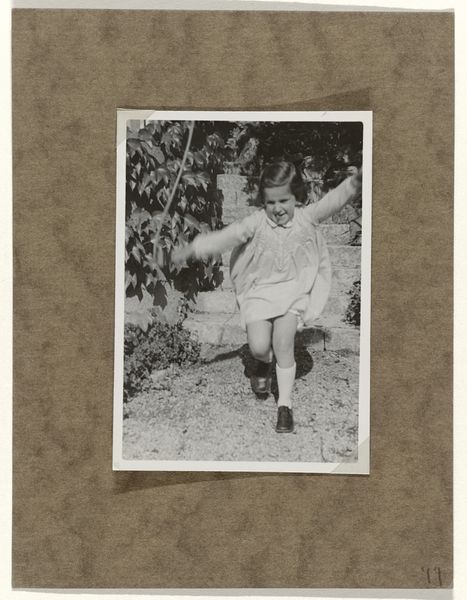
Dimensions: image: 8 × 5.5 cm (3 1/8 × 2 3/16 in.) sheet: 8.9 × 6.3 cm (3 1/2 × 2 1/2 in.)
Copyright: National Gallery of Art: CC0 1.0
Curator: This gelatin-silver print, "Jim Hajicek," by Mike Mandel, made in 1975, presents a seemingly straightforward baseball card image. What's your initial read on this piece? Editor: Stark, isn't it? The contrast is quite severe, and it feels very… deliberately unglamorous. It almost feels like it's intentionally pushing back against the polished image usually presented in sports portraits. Curator: Exactly. Mandel's work often interrogates the construction of identity, and this piece is no exception. He repurposes the visual language of baseball cards, typically used for fan adoration, to examine the themes of labor, masculinity, and even disposability within the context of professional sports. It's a commentary on how we commodify athletes. The "Oakland A's" logo adds a level of economic branding that normalizes capitalist notions. Editor: It does invite a sense of melancholic reflection on cultural touchstones. Baseball, as a sport, is laden with symbolic meaning related to American ideals of success, opportunity, and community. A classic pop-art portrait with simple contrasts becomes somewhat elegiac for such times. His gaze seems averted almost distrustful of such notions. Curator: And what does the slightly off-kilter composition suggest to you? The subject’s intense gaze juxtaposed with the almost harsh shadows in the black and white photograph. Editor: The shadows seem almost too intentional...almost an imposition on the image. I think Mandel is tapping into archetypes: the hero, the everyman, even the tragic figure. But at its essence the visual narrative here focuses our collective desire for meaning found within an individual. This work prompts a deeper reflection on cultural narratives, commodification, and the athlete's position. The very act of "framing" raises significant ethical considerations for our contemporary age. Curator: It leaves one pondering on representation within cultural history as well, I think. Thanks for lending your expertise on this work. Editor: My pleasure. There are numerous ideas circulating here in Mike Mandel's Jim Hajicek.
Comments
No comments
Be the first to comment and join the conversation on the ultimate creative platform.

